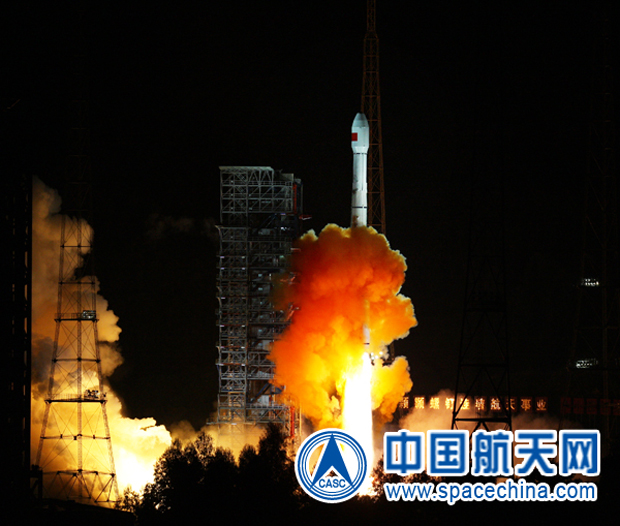
China Launches Its First Round-trip Mission to the Moon

China has launched its first round-trip mission to the moon with a robotic spacecraft, a mission that will pave the way for the country's planned lunar sample-return program.
An advanced Long March 3C rocket launched the ambitious mission early Friday (Oct. 24 local time in China) from the Xichang Satellite Launch Center in southwest China's Sichuan Province.
Called the Chang'e 5 Test 1 mission (CE5-T1) by some China space program observers, the mission is expected to last about eight days, according to the country's state-run news outlets. The spacecraft will fly around the moon and then return to Earth in order to test vital re-entry technologies needed for China's lunar return sample program. [China's Space Missions: Latest News]
This mission is designed to gather experimental data and confirm re-entry technologies such as guidance, navigation and control, heat shield and trajectory design. That knowledge will be rolled into a future touchdown on the moon by Chang'e-5, now targeted for a 2017 flight to land on the lunar surface and snag samples for return to Earth.
Also aboard the China booster are the hitchhiking payloads 4M, developed by LuxSpace in Luxembourg, and PS86X1 from Pocket Spacecraft — a virtual organization situated in the United Kingdom.
On its return to Earth, the test spacecraft is expected to make a so-called "skip re-entry” to progressively slow down before landing in north China’s Inner Mongolia Autonomous Region.
"Earthbound experiments can't effectively simulate the complexity of the atmospheric environment," Hao Xifan, deputy chief designer of the CE5-T1 and Chang’e-5 missions told China’s S&T Daily shortly before the launch, according to the AAAS ScienceInsider.
Get the Space.com Newsletter
Breaking space news, the latest updates on rocket launches, skywatching events and more!
Hao said the spacecraft’s skip reentry must be well-controlled. "If it’s too low, the probe may be burnt. If too high, it won’t be able to land in the targeted area."
The Chang'e 5 T1 mission is actually China's fourth robotic flight to the moon since the country's Chang'e 1 moon orbiter launch in 2007. Since then, China has launched a second orbiter (Chang'e 2 in 2010) and its first moon lander (Chang'e 3 in 2013). The Chang'e 3 mission also delivered China's first lunar rover, called Yutu ("Jade Rabbit") to the moon's surface.
The missions are all named after the mythical goddess Chang'e.
Follow us @Spacedotcom, Facebook and Google+. Original article on Space.com.
Join our Space Forums to keep talking space on the latest missions, night sky and more! And if you have a news tip, correction or comment, let us know at: community@space.com.

Leonard David is an award-winning space journalist who has been reporting on space activities for more than 50 years. Currently writing as Space.com's Space Insider Columnist among his other projects, Leonard has authored numerous books on space exploration, Mars missions and more, with his latest being "Moon Rush: The New Space Race" published in 2019 by National Geographic. He also wrote "Mars: Our Future on the Red Planet" released in 2016 by National Geographic. Leonard has served as a correspondent for SpaceNews, Scientific American and Aerospace America for the AIAA. He has received many awards, including the first Ordway Award for Sustained Excellence in Spaceflight History in 2015 at the AAS Wernher von Braun Memorial Symposium. You can find out Leonard's latest project at his website and on Twitter.









